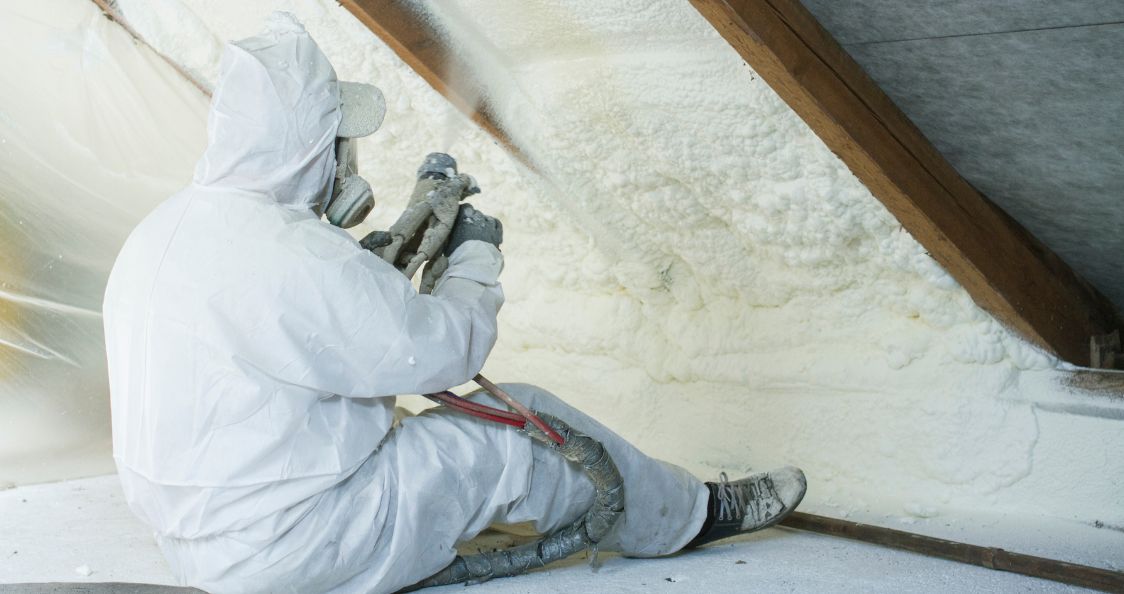TL;DR: In California, where the climate is typically mild but changing due to climate impacts, proper home insulation is crucial for comfort and efficiency. Inadequate insulation in older homes can lead to temperature fluctuations, higher energy use, and discomfort. Effective insulation stabilizes indoor temperatures, lowers energy costs, and reduces noise pollution. Options like fiberglass, cellulose, spray foam, mineral wool, and foam board offer various benefits and considerations, from affordability to environmental impact. Sacramento residents can trust Clarke & Rush for expert insulation solutions with over 60 years of experience in energy-efficient home improvement,
This article will aid in understanding the different types of home insulation so that you can choose the type of insulation that best fits your needs. Each insulation type has pros and cons, from cellulose to foam board, and we will cover them in detail.
Why Your Home Needs Good Insulation
People who live in milder climates often think insulation is unnecessary for their houses. However, the advantages of a well-insulated residence extend well beyond temperature control. Proper home insulation significantly increases energy efficiency, lowering your utility bills. By keeping the indoor environment stable, your heating and cooling systems won’t struggle to maintain a constant temperature, conserving energy and lowering costs.
Effective insulation is not just about your home, it’s about the planet. It plays a crucial role in environmental sustainability by reducing the energy needed for heating and cooling, thereby lowering greenhouse gas emissions. Additionally, insulation provides a quieter home, a benefit that can be especially appreciated in busy neighborhoods or near traffic. And let’s not forget, insulating your home also increases its market value, a win-win for you and the environment.
The Different Types of Home Insulation
Home insulation is a complicated matter. There are many kinds of insulation, each suited to particular needs and locations within your home. You can even use more than one type at once for the most insulation and best results. Let’s take a look at your options.
Fiberglass Insulation
This is the most widely used home insulation. It typically comes in rolls or batts and consists of thin glass fibers woven together. The fibers can vary in thickness and density, which affects the insulation’s thermal resistance.
Many people choose fiberglass insulation because it is quite affordable. You can find it at most home improvement stores, and its affordability makes it an attractive option for many homeowners. It’s also reasonably easy to install, making it the go-to insulation for DIY enthusiasts. Its wide availability means you can easily source the materials you need. Fiberglass insulation is suitable for various home parts, including:
- Walls
- Floors
- Attics
However, fiberglass insulation does have some downsides. If inhaled, the tiny glass fibers can cause skin irritation and respiratory issues, so always wear protective gear when handling it. Furthermore, for fiberglass insulation to be effective, you must install it properly. Gaps or compressed areas can significantly reduce its insulating properties.
Cellulose Insulation
This is another popular insulation option that has an environmentally friendly composition. It’s made primarily from recycled paper products and receives fire retardants and insecticide treatments for added safety and durability. It usually comes in loose-fill form, which you can easily blow into:
- Walls
- Attics
- Other spaces
The main advantage of this insulation is its thermal performance. It effectively fills gaps and voids, providing a barrier that prevents heat from escaping. This makes it particularly effective in older homes with irregularly spaced studs or other structural anomalies. Its eco-friendly nature appeals to those looking to reduce their environmental footprint.
However, cellulose insulation does have some drawbacks. Over time, it can settle, reducing its effectiveness and potentially creating gaps. This settling issue often requires periodic maintenance or additional material to maintain its insulating properties.
Spray Foam Insulation
This insulation is made from expandable polyurethane material. Professionals apply it using a spray gun, filling gaps and crevices. It has a high R-value, meaning it can give you an effective air barrier, reducing air leakage and drafts. Due to its rigid nature, spray foam can add structural strength to your home once it cures. The best uses for spray foam insulation include:
- Attics
- Walls
- Areas with irregular shapes
However, spray foam insulation comes with some downsides. It tends to be more expensive than other types of insulation in terms of material costs and the need for professional installation. There are also potential health concerns during application, as the chemicals involved can cause respiratory issues if incorrectly handled.
Mineral Wool Insulation
This insulation is available as slag or rock wool. It’s another solid option for home insulation. This material is manufactured from natural rock or the by-products of steel production. Mineral wool has standout fire-resistant properties, making it a safer choice for areas where fire risk is a concern.
It also increases soundproofing, so it’s often used to insulate rooms requiring noise reduction. Mineral wool provides good thermal performance, helping to maintain a consistent indoor temperature. Mineral wool works well in:
- Walls
- Floors
- Ceilings that need soundproofing and fire resistance
On the downside, mineral wool insulation is a more expensive insulation option. You’ll find it’s quite heavy and difficult to install. Despite these drawbacks, its durability and performance make it a worthwhile investment for specific home applications.
Foam Board Insulation
You can usually find foam board insulation in the form of panels. These panels are made from materials like polystyrene, polyisocyanurate, or polyurethane and provide a high R-value per inch, which measures the insulation’s effectiveness.
Foam board insulation is especially advantageous due to its moisture-resistant properties, making it suitable for damp environments. Its lightweight nature simplifies handling during installation. You will often find foam board insulation used in areas like:
- Basement walls
- Exterior walls
- Foundations
If you plan to insulate these parts of your home, foam board insulation might be a practical option to consider. However, this type of insulation can be more expensive than others, requiring precise cutting and fitting to ensure proper coverage and effectiveness.
What To Consider When Choosing Home Insulation
When choosing home insulation, you must consider factors like your local climate, budget, and your home’s specific needs. The insulation material’s R-value is also important: the higher it is, the better the insulation properties.
Decide if you want to apply the insulation yourself or hire professionals, as this might affect cost and effectiveness. Also, think about the health and environmental impact of different insulation materials. Some options might contain harmful chemicals, while others are more eco-friendly. Finally, check which insulation is compatible with your existing home structures and systems to avoid any complications during installation.
Get Professional Insulation Installation In Sacramento, CA
Insulation is a necessary home addition that can improve temperature regulation and noise levels. It also helps save money on electricity bills and increase your home’s resale value. But, applying home insulation correctly is not a small task.
If you need help choosing and installing your insulation, Clarke & Rush is here to offer its expert services. With over 60 years of legacy in the Sacramento area, we specialize in energy-efficient solutions tailored to your needs. Our experienced technicians prioritize precision, efficiency, and customer-centricity, making us a reliable choice for all your insulation requirements.
Contact us today to schedule a consultation!


